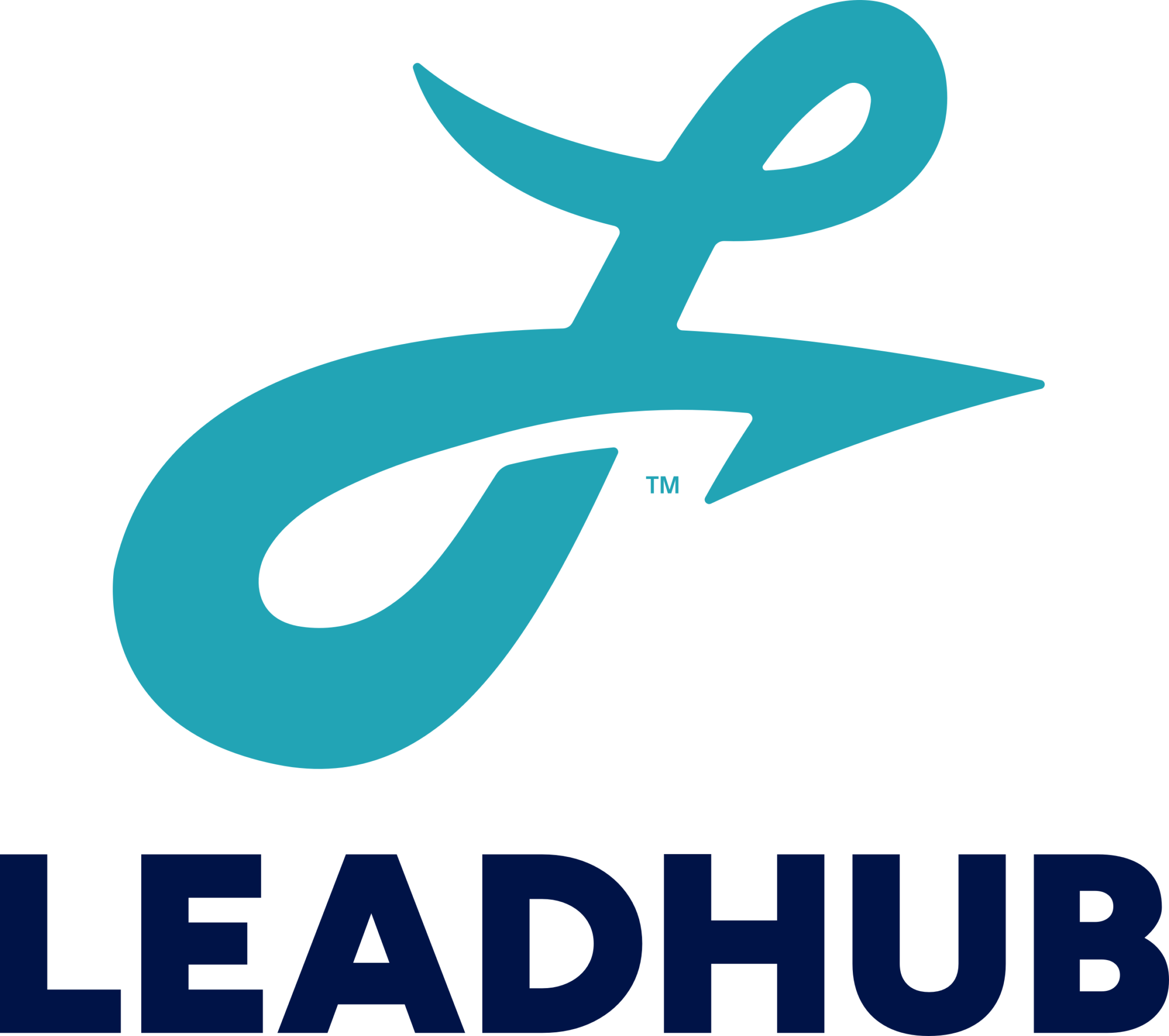CRM. CSR. MPG. SQFT.
Chances are you instantly recognize these acronyms or abbreviations and the importance they play in the home services industry — but there’s one acronym that may not instantly ring a bell that has an even bigger impact on your company.
SERP stands for search engine results page — otherwise known as the information that continues to drive business and make Google billions after billions.
The SERP plays a huge role in your company’s visibility to potential customers, and it can be a little overwhelming to understand right off the bat. Leadhub specializes in understanding the ever-changing SERP landscapes. If you want to know how your trades business stacks up against the competition and where you appear when consumers search for you, keep on reading!
Why Is It Important To Be At The Top Of The SERP?
With so much information at our fingertips, the attention span of the average internet user has shrunk significantly. Users are less likely to spend time scrolling endlessly through the internet in search of what they want to find. When people search for something on Google, they want their answer and they want their answer now. Being at the top of the SERP ensures that these people get what they want, and they get it from you.
How To Read A SERP
Once someone enters a search query into Google and hits return, they’re sent to that query’s SERP. Each SERP can display several different features, but it all depends on the search keyword (or keywords) used. Most home services-related searches will likely have all four of the following.
Paid Results: The Very Top of the SERP
Google SERPs, especially for queries related to the home service industries, will likely display two types of paid results or ads.
LSAs, or Local Service Ads, are only shown on SERPs related to the service industry. These will be the very first things shown under the query, appearing as three small boxes with a Google Guarantee on each — and they also pull in a company’s Google reviews. With LSAs, you pay by the lead, so you’re only charged when a potential customer contacts you through the ad.
The second type of paid results on a SERP are traditional pay-per-click ads or Search ads. These ads have been Google’s bread and butter over the years, giving businesses real estate above the organic results and charging for every click on the ad.
Local Results, AKA, the Map Pack
If you use a locator in your search query, like “air conditioning San Antonio,” chances are you’ll see local results on the SERP. This section is commonly referred to as the map pack, and it highlights three businesses (along with their business hours and Google reviews) that Google believes to be the best matches for the search query based on relevance and distance, among other factors. The map will also show other businesses in the area it feels are relevant to the search.
Sometimes, paid results will also appear at the top of the map pack. These ads fall in line with Google’s Search ads and can be operated through Google’s ad campaign manager.
Earning results in the map pack is crucial to SEO. Typically, a position in the top three on the map pack will indicate increased organic traffic and higher conversion rates. Many different factors go into ranking in the map pack, including number of reviews, the proximity of your business to the city center, Google Business Profile optimization and hyperlocal keyword optimization on your website.
SERPs are consistently changing, but the most changeable part of the SERP is the map pack. Google is constantly experimenting with the map pack, oftentimes moving it higher and lower on the SERP or increasing or reducing the number of results appearing in the map pack. The map pack is the single most difficult spot to rank in and with a growing amount of competitors practicing SEO, it is essential to have an experienced local SEO team on your side to optimize your local rankings.
Organic Results
These are the traditional blue links you expect from a Google search. Each SERP’s organic results are determined by hundreds of factors tied to Google’s algorithms, but your website’s search engine optimization strategy plays a huge role here.
Content keywords, page titles, internal link structure and backlinks all play a part — just to name a few — in how high your site will rank on the SERP. When embarking on an organic strategy, it’s important to remember that Google is looking for quality content that follows their Helpful Content and E-E-A-T guidelines. Your website should be accessible, easy to read and offer a positive user experience if you want to rank well organically.
Ranking toward the top of organic search results is one of the most cost-effective, long-term strategies to drive relevant traffic and leads to your site. However, as Google continues to push organic links further down the SERP, organics as a traffic source is decreasing for many home service companies. This is why it’s important to pair your SEO strategy with a robust paid strategy.
Related Searches And People Also Ask
One of Google’s most user-driven features is the Related Searches box. This box used to be located at the end of each page, but now that Google has implemented infinite scroll on desktop and mobile (more on that in a minute) it is located after about every 10-15 results.
The related searches box shows potential searches related to that query’s keyword(s). These related searches are generated by Google’s algorithm — but they’re actually very helpful for SEO purposes. You can count on these related searches to find keywords for the content on your website.
Likewise, the People Also Ask feature, (dubbed PAA by SEOs), is a great tool for social listening and keyword research. It will help you find out more about what your customers are searching for and what questions are top of mind for them. Using the PAA, you can create content that answers those specific questions in your blog, FAQ page or even your service pages.
Unlike related searches, the PAA is often located just below the map pack, but it does move up and down the SERP depending on Google's algorithm updates, which happen daily. It is an accordion-style feature, and when you open up one question, it generally opens up even more related questions. Getting your website in a PAA is another great traffic booster.
Featured Snippets: The King of the SERP
It’s ironic that we’re putting featured snippets at the bottom of this list, since featured snippets often go to the top of the SERPs for long-tail queries, AKA, longer keyword phrases like questions or simple sentences.
If you’ve ever asked Google a question and it gives you the answer at the very top of the page without forcing you to go into the website to dig for more information, you’ve encountered a featured snippet. Featured snippets are coveted by SEOs and content marketers alike because they drive high volumes of traffic to your website and indicate to Google that the site is authoritative.
Information For The SERPs
So where does Google get all the information about your business? The answer is pretty simple, actually — from you.
With LSAs and the map pack, the display information is drawn from your company’s Google Business Profile (formerly known as Google My Business). You’ll want to make sure all the information in your profile is correct — especially your address and phone number (for the map pack) and your business categories (for LSAs). You also want to make sure the information you use is consistent on both your Google Business Profile and your website.
Finally, having a lot of 5-star reviews will increase your company’s chances of appearing in the map pack (and LSAs, if you decide to run them). One of the best ways to get great reviews is to invest in review acquisition software. These will help automate your review earning process and will help you get your listings up to the map pack.
Your SEO strategy, as mentioned earlier, will be the biggest driver of success when it comes to organic results. Beyond all the things we mentioned earlier, Google primarily crawls mobile versions of websites now through Mobile-First Indexing.
This means your site either needs to be mobile-friendly or responsive. Having a local SEO strategy on your site structure can also make a big difference here, which shows Google how far your service area can reach.
Scrolling The SERPs
The days of hoping and praying your business will appear on the first page of the SERPs are actually gone. Don’t get us wrong — it’s still important to rank higher to drive traffic and leads to your site.
However, Google no longer breaks search results down into pages. They introduced continuous scroll to SERPs on mobile in 2021 and brought this same feature to desktop SERPs in late 2022.
Now, when a user searches for something, they will continue to scroll and scroll while Google will feed multiple pages of results all at once. Sure, if a user scrolls far enough they will still need to click “More results” to see more options — but the days of clicking on page 1 and page 2 and page 3 and page 4 are no more.
Ranking Better On The SERPs
Does your home services business need help to rank better in Google search? Leadhub is your hub for all things marketing. We help home service companies across the country acquire leads and maximize revenue. Schedule a free marketing discovery call today to learn how Leadhub can take your business to the next level.

